The Power Of Self EsteemPositive self esteem and a positive attitude is very important for success in life. I believe it can be a game changer for kids if they learn to value their self worth and uniqueness. Kids that struggle with their own worthiness, find it hard to care about others. Helping them feel good about themselves will build self confidence and set the tone for a more successful year. Lessons From Tigger And EeyoreAttitude has the power to change the way the day goes. Just look at Tigger and Eeyore. Although Eeyore is a lovable character, he see everything through dark clouds. It takes his friends to encourage him to try things out and find good in his world. Tigger is very happy go lucky and almost too bouncy and positive at times for his friends, but he sees the fun and excitement in everything and wants them to see it too. Imagine how it must feel for children to always see themselves as an Eeyore. “I can’t do anything right, I might as well not try because I am going to mess up. I’ve misplaced my tail again!” This won’t give them much incentive to try to do things or even imagine that life could work out well. “Tigger” children are game to try anything and don’t worry about the outcome. Excitement and fun is the focus Because of this, they keep going and trying even when it doesn’t work out the first time. We don’t have to be bouncing off the walls to have a positive outlook on the world, but it's important to see joy and not just negatives. Optimism lesson suggestionsDo a lesson on optimism and pessimism using the example of Tigger and Eeyore. Expand it to share a couple of scenarios with kids in different situations that show how a positive or negative attitude affects the outcome of the situations. Discuss ways to change the situations. Example 1: At the beach: One boy wants to swim to the dock. He talks about diving off the edge, playing water tag, doing flips and having fun. The other complains, "The water is too cold, I can't swim very well, it's too far, I'd rather stay on the beach and watch." Example 2: The teacher introduces a new game. Sally is excited and ready to play. She gathers all the necessary equipment and asks her friend Nancy to join her. Nancy is hesitant. She worries that she won't be any good at it. She can't remember all the rules. She creates roadblocks that prevent her from trying. Add in more activities and lessons about self worth, self confidence, and power words. This can make a huge difference to how students respond to each other and situations that arise in the classroom. The sooner we can help kids to see that they are unique and special, the sooner they will strive to be the best they can be. Their goal should be to improve themselves and not try to be someone else. A positive attitude is key. One of the sayings in my class was “Attitudes are contagious. Is yours worth catching?” This was a reminder for both the kids and myself that we need to check our attitudes and see if they are helping us to be successful. In a world where we are surrounded by negative, a positive attitude is even more necessary. It is our job as teachers, to help kids see that they are valued and important and that they have much contribute to the world around them. We also need to help them develop good team skills and support them if they slip up. If we provide them with the tools to be good team players they will soar in a competitive world, pick themselves up when they fall, dust themselves off, and continue on. They will accept the minor setbacks are part of growing, not failures and they will be able to move forward. Some Activities And ResourcesSuccess and Power words Bucket filling activities Acts of Kindness Optimist or Pessimist Task Cards I Am posters Name Acrostics Last time, I wrote about a strong classroom management plan. If you add a self esteem component to your plan, you will have a positive classroom environment and a more successful year. Remember attitude is everything. Focus on what is going right and build a caring and respectful class community with these two things. You've got this! Positive Classroom Management Strategies and Self Esteem Go Hand In Hand I would like to give a free set of the smiles/frown edition to any of my email subscribers. Related Posts
0 Comments
Classroom Management Tips Part 1Kids running around the classroom, a messy coat room, desks crammed with papers and groaning when they can't find their things and it's time to get to work. Sound familiar? Teaching children is exhausting and challenging when constantly redirecting those who misbehave or distract others. It's important to have a solid classroom management plan and build an environment of respect and cooperation if you want this to change. Even when kids drive you nuts with their wiggling, whining and crazy antics, you need to remember parents have entrusted you to teach them. You would want the same for your own children. Have A Solid Classroom Management PlanClassroom management is only effective if kids buy into it and follow the rules and routines that are established. Kids are creatures of habit and routine even though they may not realize it. When guidelines are unclear and every day is a mix of activities with no defined order, you can expect behavior confusion to rule the day. Imagine showing up at work and just winging it because you don't have a routine or schedule to follow. Once in a while no plan might be a pleasant break, but on a daily basis it can cause chaos and extra stress. Clear guidelines let kids know what they can and cannot do. These need to be consistent, none of this “okay one day, and unacceptable the next” stuff. This goes for actions, classroom organization, and the way people talk to each other. It's all part of developing a caring, respectful class community. If you show kids respect and teach them the rules and expectations, kids will want to behave respectfully. Bottom line: Respect is key for a caring classroom environment. Share Stories and Anecdotes With Your StudentsKids want to feel that their teachers care about them. Doing things together and sharing part of your life outside of school helps them feel connected. My students loved to hear about my family, pets, and childhood adventures. Every year I would introduce my family to the kids and their parents in my first newsletter. This helped them to see that I had a life outside the classroom and that I wanted them to be included in a part of it. My son said it well in his speech at my retirement: “I think family plays into her everyday work life. My mom is firm, yet fair, and she cares so much about the success and well being of her students, they become like extended family members…who else can say that they get an annual birthday serenade from a class of elementary students, who’ve been well briefed on your life…” Remember To Have FunIt's important to laugh with your students and share funny moments with them. Laughter is a great connector. As a beginning teacher, I remember being told that you shouldn’t smile for the first few weeks. I feel that is bad advice. Kids need to see that you can be fun to be around and you enjoy having them in your class. Think about how it makes you feel if you are around people who never smile or include you in their happy moments. Of course, being a buddy instead of a teacher is not what I am suggesting. You're the teacher and you need to set the boundaries, Just remember to include some happiness during your day. This will do wonders for you as well as your students. If kids feel they're part of your life, they will start to trust and believe what you have to say. They will be more willing to share part of their lives with you too. Focus On What Is Going RightIf you focus on the things that are going right and actively acknowledge and praise those actions, you're more likely to see others buy in and do similar actions. Encouragement and praise go a long way if they are honest and not empty words. Another part of this strategy is removing the audience for the negative. If kids constantly tell on others for breaking rules or give attention to negative behaviors, it gives the one misbehaving attention, even if it's negative attention. People are emotional beings and they need to know you care about them and value them. Nobody want to be "bad", but some are so hungry for attention, they will behave in negative ways to be noticed or in some cases to distract from their insecurity or inability to do something as well as others. Redirecting your approach to focusing and acknowledging positive behaviors gives them attention in a positive way and helps to decrease the negative behaviors. This is just a small part of getting your year started off with strong classroom management and positive self esteem. Next time I will share Part 2 which focuses on building positive esteem. If you would like some more detailed information about developing your classroom management plan, check out this post I wrote last summer. Some Classroom Management Resources To Get Started Out RightRoutines and Schedules Task Cards Classroom Manners Dos and Don’ts (3 versions) Lining Up Tips Classroom Routines Back To School Start Up Forms Calming Strategies WBT Rules Posters I truly believe that effective classroom management and a focus on positive self esteem will make the difference in your classroom and that it will lead to a successful year. Have a great year! Related PostsChanging behavior in the classroom - Meet "Johnny"As I walk down the hallways of the school, my heart breaks when I see kids sitting out in the hall almost daily because they are being disruptive in the classroom. It brings back memories of a child I had a few years ago. It was the end of the first week of school and I met up with the mother of my new student "Johnny". I was surprised when I heard what she had to say. "This is the longest he has ever remained in the classroom." Red flags seemed to jump up all around me. What did she mean? What was I missing? I pondered this statement and decided I might want to investigate why she said that. I checked on his file to learn more. Start with a clean slateIt turned out that he had many behavior issues that made it difficult for him to remain in the classroom for the full day in his previous school. Because I don't read the files of new students right away, I was unaware of this. I just took any movement toward misbehavior and redirected it as I would with any other child. This is not to say that the behaviors weren't there, but they were not my focus. Since I didn't know his history, I hadn't formed an expectation of negative behavior and he was able to start with a clean slate. Does this mean that the behaviors had disappeared? No, but we found ways to lessen the frequency and degree of negative behaviors and increase the positive behaviors. The weeks and months progressed, and "Johnny" and I developed an understanding so we were able to interrupt potential behavior issues and make things work. This took some creative effort, but with the help of his classmates we were successful. Every day was a new day, so he learned that he could start fresh the next day if he messed up or needed time to self regulate and regain control. How did we make this work?I remembered a keynote speech from a couple of years earlier that promoted thinking about what is going right in a negatively charged world. It hit me that this could be a game changer. I began to focus on developing positive self-esteem and creating a class community based on celebrating successes. We zeroed in on what was going right and learned not to feed into the negative stuff. (More on this next time.) When "Johnny" didn't get attention for his negative behavior, it became less and less. Many of his behaviors were ways to distract others from seeing that he struggled with reading and writing or he didn't understand a concept or lesson. I suspect that some of this was because he missed key instructions and practice during the times when he was not in the classroom. He loved to share what he did know and this often meant that he would blurt out answers and interrupt others who were sharing if he made a connection to something they said. Instead of getting upset with him for this, I quietly reminded him that it was their turn and he could share when they were finished. Little things like this helped him to be able to participate in class activities and have moments to share his ideas. Differentiation and focusing on learning styles made a huge difference. Here are some of the notes from his report card. - creative thinker - enjoys nonfiction topics - enjoys sharing ideas - enjoys active lessons - very knowledgeable about his world - learns best orally - works best one on one One of the key ways we were able to help "Johnny" was to focus on what he could do and be his cheerleaders. His classmates were awesome cheerleaders for him and helped him to feel he was valuable and part of a special team. When he learned that he wouldn't be teased for his struggles with reading and writing and that he could have support with these areas, he was more willing to do the work. Scribing stories and writing words in an idea book helped to share his thoughts. He loved to share stories and adventures and the kids enjoyed hearing them. Because he felt accepted by his classmates, he worked harder to fit in and become a team player. His self esteem and confidence grew, he made friends, and he ended up having a successful year. The transformation was heartwarming to see. Ignoring negative behaviors and focusing on positive behaviors wasn't easy, and I had to intentionally control my emotions, bite my tongue, and not freak out at actions that had the potential to explode into very negative behaviors. But it paid off in dividends. So much so, he told his younger brother that he needed to be in my class because "Mrs. Sequeira gets us." (Little did I know at that time that his brother also had many behavior challenges.) I wish I could say that "Johnny" continued to build on this success and have a positive school experience, but it wasn't so. After all the work that was done during the year to work on being a positive, responsible member of the class, it seemed to unravel in the next couple of years. My heart sank as I saw him spending many days slumped on a chair in the hallway because he was too "disruptive" in class. I could see in his face as he looked down at the floor that he felt uncomfortable when I saw him out there. I guess other teaching styles didn't work well for him and he was unable to adjust to them and continue to be successful, so he reverted to his old behaviors. Changing my focusSadly, this is not the first time this has happened, and it won't be the last. I have seen several students over the years struggle to adjust to the different classroom situations. I have to admit, there were times earlier in my career when I had difficulty with some students and found it very hard to manage their behaviors in the classroom. As I did some soul searching, I discovered that it was my own classroom management skills and my understanding of kids and why they might be acting out or behaving in negative ways that needed changing. When I figured this out, my approach in the classroom became intentionally focused on nurturing positive self esteem, promoting optimism and a positive attitude, and developing self confidence during my first few weeks of school. Changing my focus to what was going right was a big shift that helped to create a more cooperative and caring class situation. Focusing on SEL (social emotional learning) and mindful behavior is key to developing a caring and respectful community which can work even for kids with challenging behaviors like "Johnny". Next time, I will give some specific tips and activities that help develop positive, confident kids and a cooperative and caring community. Get a free copy of this poster by signing up for my newsletter. Related PostsEngaging students to learnWhen students arrive back to school from summer break, the room echoes with excitement as kids reconnect with classmates. But that quickly fizzles when it is time to actually do some work. Groans can be heard and the grumbling starts. Some are happy to do the activities planned and others want to get outside and play or take out electronics and zone out. And so it begins. Kids are not always excited to return to school and start studying again. What can you do to engage your students and get them excited to learn after a summer break from learning? The answer to that question will be different for each person depending on their personality, experience, and classroom situation, but there are some things that could work for most teachers. Here are a few suggestions to get your kids motivated and wanting to learn the first weeks back at school. Take learning outsideKids have been enjoying the summer break and hopefully they have been spending time having fun outdoors. If you wish to keep them interested when they return to school, try to incorporate some outside activities during the day. These could be review activities, exploration, science activities, or maybe even body breaks and daily PE. I know that my students were eager to get outside and do hands on activities and it helped to make the transition back into school easier for them. Check out my blog post about taking learning outdoors for the fall for some specific types of activities. Community buildingHave you ever had a group of kids that were a challenge? Did you wonder if you would be able to get them to sit still, listen and cooperate? Building community is especially important with these types of situations. It is important to build respect and caring in the classroom. This can be encouraged by doing partner activities and group activities that help kids to meet their classmates and learn more about them. You may even need to add some specific classroom management systems. As you are figuring out where they fit in academically, you can start doing games and activities that foster teamwork and respect. Activities that foster positive self esteem and help to develop self confidence could also be a focus. Focus on developing positive self esteemBeginning the year with activities that focus on positive self esteem and classroom management will ensure that children have the tools for a successful year. There are many different ways of creating a caring and positive classroom. It is important that you choose what works best for you. I always start out with teaching about optimism and a positive attitude. I also use bucket filling activities and acts of kindness as a focus. Here is more about what I tried in my classroom to develop positive self esteem and help kids blossom and display increased self confidence about themselves. Move, move, moveJust like teachers, kids are tired at the beginning of the year as they start up new routines and stay in class for several hours. Incorporating movement and organizing classroom activities for transitions will help keep kids energized so that they stay focused and alert. Games and body breaks work well to keep kids active. Doing hands on activities and partner games also work well. Rules and routinesKids are creatures of habit as well as adults although they may not be aware of this yet. When you give students routines and schedules to follow, you can help them regulate and focus on daily and weekly expectations. With pre-planning and teaching for when unexpected events and situations happen, we can help them avoid meltdowns. Create classroom rules and establish routines that work for your students. Depending on the age of your students, you can take their ideas into consideration and create the rules together. This is a great community building activity as well. Here is a set of routine and schedule cards that I created that may be useful for the classroom. I have made them in both English and French. You can get a free copy by clicking on the image. First week back activitiesWhen selecting activities for the first week of school choose a mix of fun activities that review concepts and skills from the year before to ensure that they are not lost somewhere in distant memory after a summer of no school and that they will be able to use them to build on for new concepts and skills to be taught. We have all probably experienced the situations where kids stare blankly at us as if they had never heard of the subject before. If you get your previous students back for the first few days, you will want to ensure that they are doing something that is not a direct repeat of the previous year. It can be similar, but they will respond better if it is varied and approached from a different angle this year. You may have new students in your class as well. They will need to be able to handle the material given as well. They won't be familiar with your teaching style yet, and they may or may not have covered the same material last year, so there will need to some differentiation and extra support in certain cases. If you are looking for some back to school activities, check out my back to school category. These activities are geared to primary and cover some basic math and language skills. I hope these ideas help to make your school year start up successful. Have a wonderful year. Related PostsTips For Planning Ahead To A New School YearIt may seem crazy for some teachers to be talking about preparing for the new school year so soon, but for other teachers, your summer break is already half over. If you are anything like me, your mind is already thinking about how the new year might look, what you want to do in your classroom to make it fresh for your students and yourself, and what resources and materials you might want to start gathering. You may even be thinking about ways you will build classroom community and set up the rules and routines. Here are 6 tips and ideas that can help you prepare for a successful year. 1. Give your classroom a fresh lookChanging up your classroom arrangement and giving it a fresh look can help you to feel refreshed and ready to begin a new year. In our district, we get our former students for the first week of school as the numbers are tallied and the classes are formed. Even though we try to organize things before school ends for the year, there are always changes in the fall. New students come, some students move away, some go to online instruction, etc. These all affect the numbers and how they are distributed throughout the grades. Once the classes are organized, kids are moved into their new classrooms. Usually, some remain because of all the split grades. Changing up the room and giving them special roles help them to feel like they are important and not missing out. Do you change up how the room looks or add a new decor to your room? If you are looking at adding some color to your room, you might want to check out my rainbow set. It has many different elements in it to make your classroom look cheerful and ready for a new year. I have created an English and a French version so that it will work in French Immersion or core French classrooms as well. 2. Use ice breakers to build classroom communityBuilding a classroom community will help with gaining trust and respect in the group. This is an important part of creating a caring and successful learning climate for the students. There are many different ways to build community. We will look more at this another time, but for now, here are a couple of ice breaker type ideas that might help with getting started. Getting to know each other is an important part of developing class community, so I like to do many different group activities and partner games to mix up the kids and help them to learn to work together with others. Here are a couple of the activities I have used in the past along with a twist to make it a bit different. Find Someone Who Find Someone Who is a well-known icebreaker that is used in various forms. This is my newest version. It is more extensive and can be used for getting to know classmates better. There are interview questions for the 5W and there is also a game component where teams can work together to guess who the person interviewed was. Check it out by clicking the image. If you would prefer a simplified version that is a fast icebreaker, I have made another version that just asks a couple of questions. Click the image to get your free copy. inside/outside circles Choose a topic and have the one circle share with the person they are facing. Then switch roles. This is a great way to learn information about several others as you can continue to have one circle move so that the partners keep changing. You can ask the same question multiple times or you can change up the questions to find out more information. Choose questions that will guide the conversations to learning more about the class members. Ipad glyphs Here is a great way to combine getting to know each other and math. Each glyph has different information on it depending on the likes and interests of the person creating it. After the glyphs are completed, many different questions can be asked for analyzing the data. 3. Have some classroom management strategies plannedClassroom management is an important part of teaching. There needs to be some sort of classroom routine, structure, or rules that are agreed upon in order for good learning to happen. These can be given, mutually developed, or a combination of the two, but they should be established during the first few days so that they can be practiced and followed as soon as possible. I found that using a t-chart for creating some of these routines worked well. Here are some that I used. Classroom rules and manners posters can also help to remind the kids of expectations. Here are some that I created for the primary classroom. There are a couple of different patterns available as well as a black and white version if you prefer. 4. Have some quick and easy activities readyThere are often times during the first few days when you are trying to adjust to getting back into the school routine that you may be scrambling to fill in a few minutes here and there. If you have some quick and easy activities or brain break games ready, you can just grab one of them to use. This will also help to avoid confusion, management situations, and it will help to keep the kids engaged. 5. Remember to have some funThe temptation may be to get started on academics right away, but remember that both you and the kids need to get back into a routine. It is important to make sure that you keep the fun in the activities and interject the academics in a way that isn't too intense as you do review or introduce new topics. Taking some time at the beginning to review and engage with your students will pay off later on. 6. Make sure to take care of yourselfThis is actually one of the most important tips I want to share with you. If you want to be able to get through the next year without burnout and stress, it is important to focus on self care. Every year we seem to forget how tiring it is to start a new school year. Teacher tired the first few weeks of school is real. Make sure that you are getting lots of rest. Take some time for you. Don't just focus on your job. Even if it is only a few minutes a day, do something for you that will help you to de-stress and relax. These are just a few ideas to think about as you leave school for your summer break or as you continue to enjoy your summer holiday. Next week I will talk more about back to school ideas and setting your year up for success. Until then, continue to enjoy your summer break. You deserve it. Related Posts |
About Me Charlene Sequeira
I am a wife, mother of 4, grandmother of 9, and a retired primary and music teacher. I love working with kids and continue to volunteer at school and teach ukulele. Categories
All
|












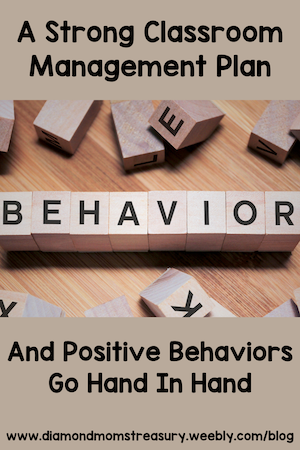























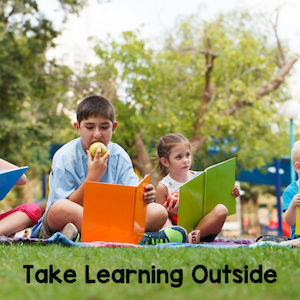

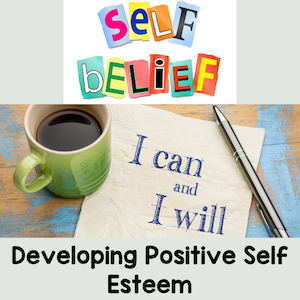












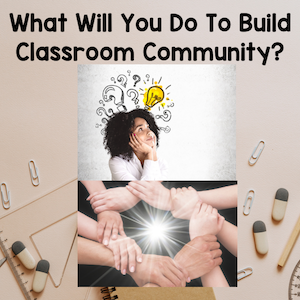

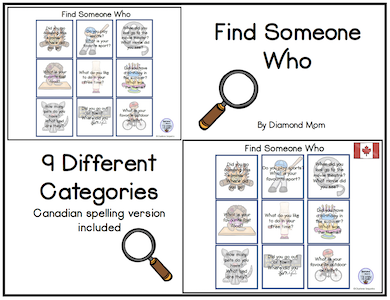



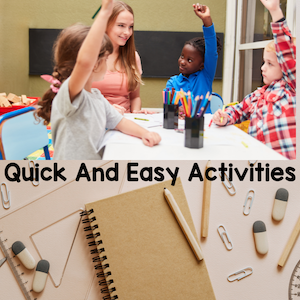








 RSS Feed
RSS Feed